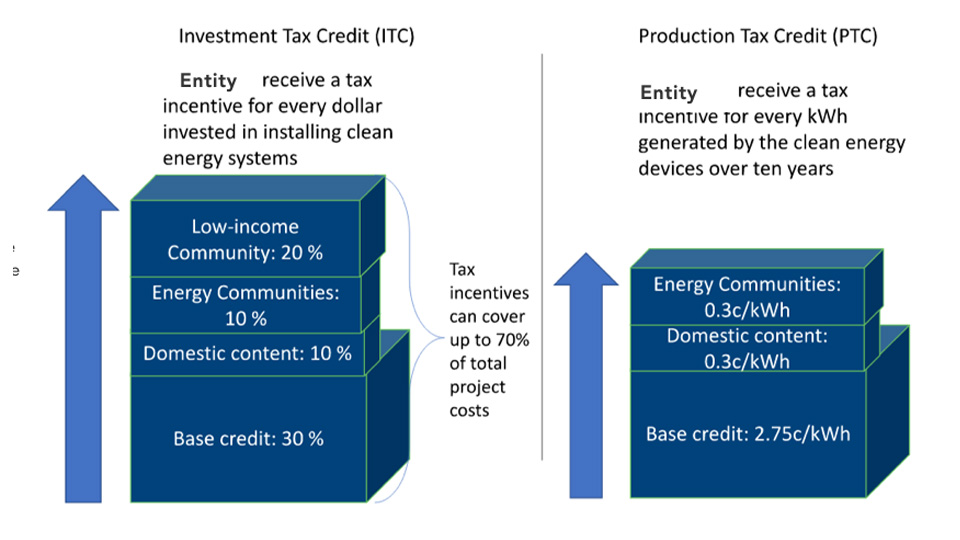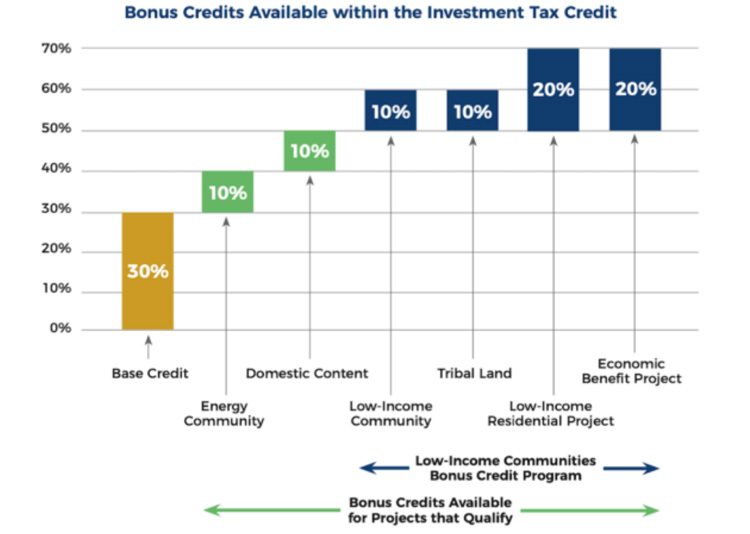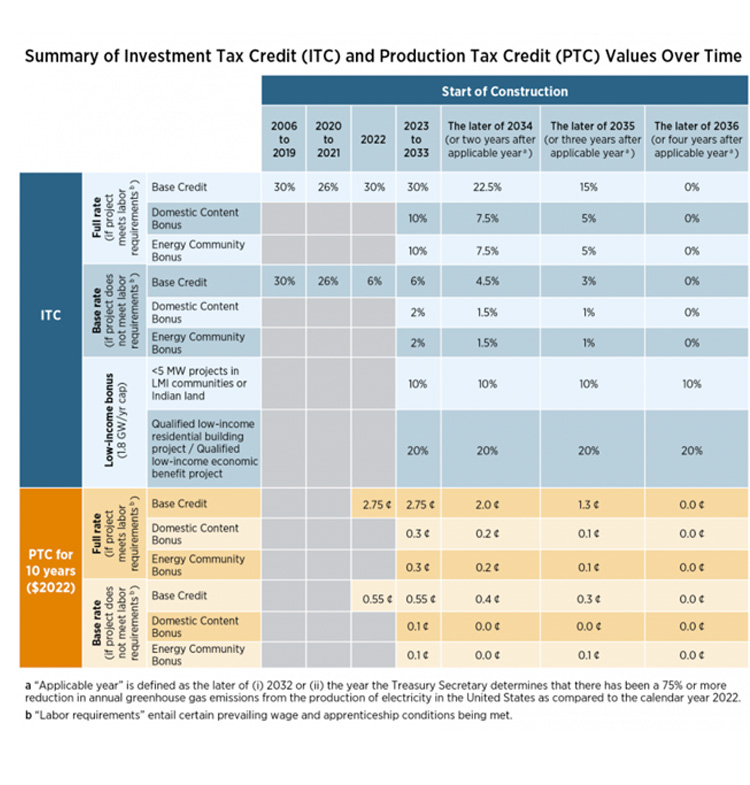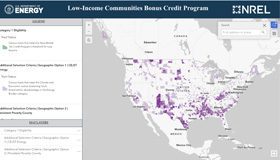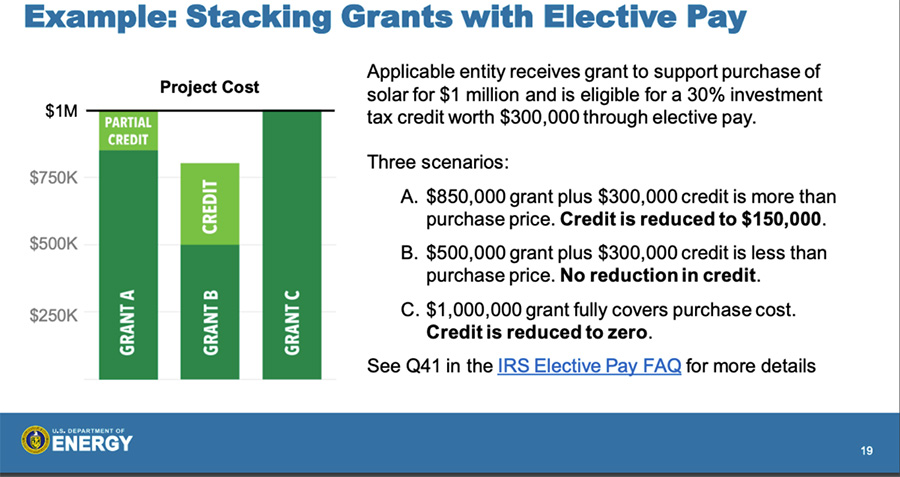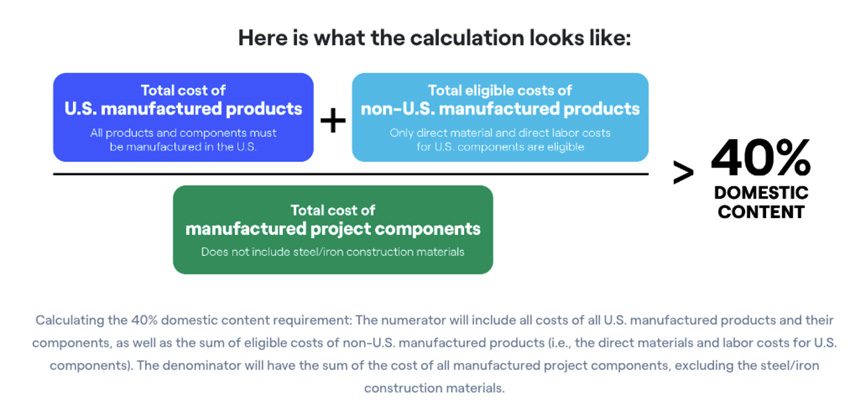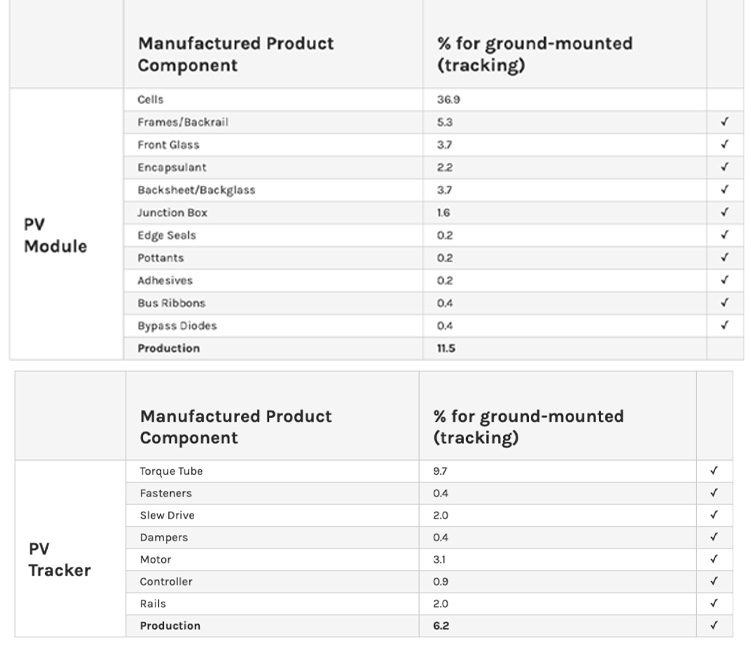There are two tax credits available for businesses and other entities like nonprofits and local and tribal governments that purchase solar energy systems (see the Homeowner’s Guide to the Federal Tax Credit for Solar Photovoltaics for information for individuals):
- The investment tax credit (ITC) is a tax credit that reduces the federal income tax liability for a percentage of the cost of a solar system that is installed during the tax year.[1]
- The production tax credit (PTC) is a per kilowatt-hour (kWh) tax credit for electricity generated by solar and other qualifying technologies for the first 10 years of a system’s operation. It reduces the federal income tax liability and is adjusted annually for inflation.[2]
Solar systems that are placed in service in 2022 or later and begin construction before 2033 are eligible for a 30% ITC or a 2.75 ¢/kWh[3] PTC if they meet labor requirements issued by the Treasury Department[4] or are under 1 megawatt (MW)[5] in size.
Solar Investment Tax Credit (ITC)
The ITC is a tax credit for businesses that install a commercial solar energy system. According to the Inflation Reduction Act of 2022, businesses can claim a 30% tax credit for their solar installation until 2032. In 2033 and 2034, the credit for commercial properties will drop back to 26%.
The ITC grants a solar installation tax credit with no yearly maximum. If your business cannot use the credit in the year that you earn it, you can carry it forward for up to five years.
Production Tax Credit (PTC)
The PTC is a federal tax credit available to business owners who install a qualified solar energy system. It’s a credit for your solar energy system’s energy production and is currently $0.026 per kWh. It will adjust each year with inflation, so it’s essential to take advantage of it sooner rather than later. You can receive either the ITC or the PTC for your commercial solar installation.





